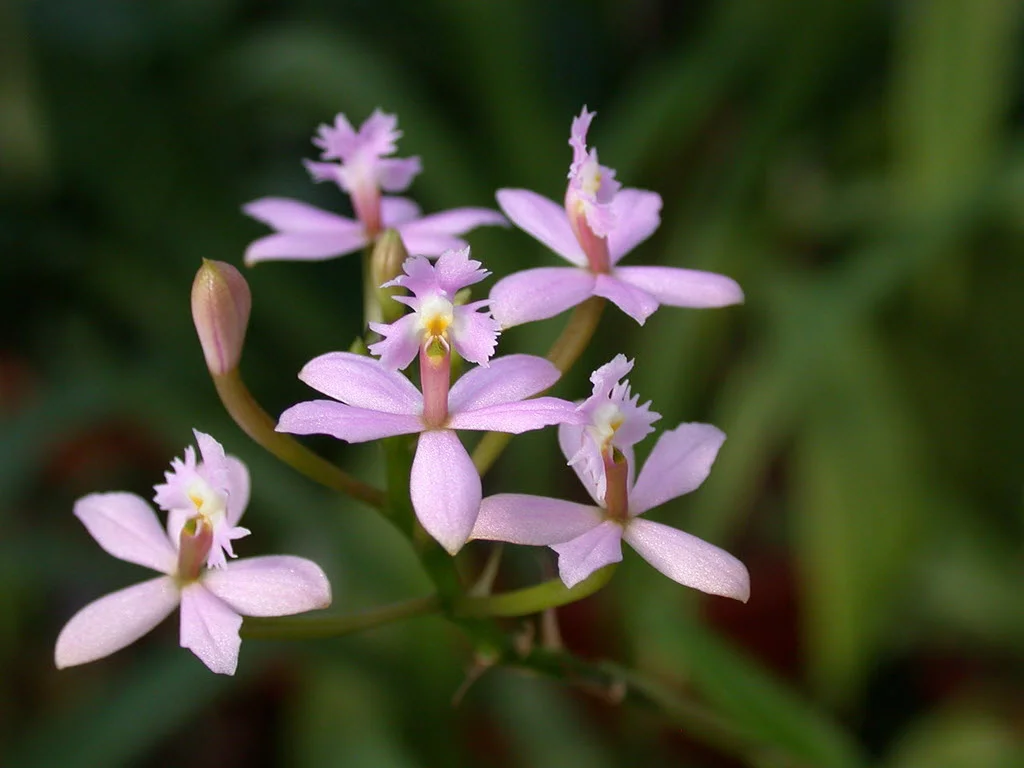Table of Contents
Pronunciation: Spath-o-GLOT-tis
Other Names: Ground Orchids
Introduction
Spathoglottis Orchids are a very dominant species that Hawaii lists as an environmental weed because of how invasive it is to more sensitive flower beds. In the wild, the flowers on this orchid don't open all of the ways, but selective breeding has allowed them to become much showier.
Spathoglottis Plicata
The orchid has six or seven deeply pleated leaves that come from each pseudobulb, and the inflorescence typically has between eight to twenty-seven flowers that come in a deep magenta coloring. The flowers are also classified as self-pollinating (cleistogamous).
Temperature
These plants usually grow wild in mountainous regions, and this means that they prefer cool to warm temperatures to be happy and grow. However, they're pretty flexible when it comes to their temperature requirements.
If you have warm temperatures that range from 50°F to 80°F (10°C to 27°C), they'll bloom year round. During the nighttime, temperatures can fall to 40°F (4°C). If your winter temperatures fall below 40°F (4°C), your plants will go into a dormant period until the temperatures warm back up.
Light
Your orchid will do very well in very bright but indirect sunlight. If you're growing them indoors in the northern hemisphere, place them in a bright south or east-facing window. If you're growing them outdoors, place them in an area that gets bright morning sunlight and partial shade in the afternoon.
If you have lower temperatures during the daytime, you can try placing them in direct sunlight, but they usually don't do very well, and they're prone to sunburn. When the plant's leaves start to turn yellow or lighter green, that's a sign for you that they're getting too much sun.
Water and Humidity
Spathoglottis orchids like a slightly less water amount than many other orchid species. They like to dry out quite a bit between watering, and this means that you should only water them every two or three days. If you're concerned about not giving them enough water, you can switch to watering them in smaller amounts every morning.
These orchids also like to have a fair amount of humidity in their growing environments. Ideally, your humidity levels should range between 60% to 70% year round. It's also a key growing condition that they have very good airflow.
Feeding
You'll have to feed your orchid once every week to keep them happy. Use a well-balanced fertilizer mix that you've diluted to half-strength. When you feed your orchid, be careful not to get any of the fertilizer on the plant's leaves or flowers because even at half-strength it's still strong enough to burn them.
If you live in an area that experiences cooler winter months, you can cut back on the fertilizer and feed them once every two weeks during the cooler period. They won't be growing as rapidly during this time, so they don't need as much food.
Potting
You can grow these orchids in terra cotta or plastic pots with a very rich cymbidium-type potting medium. They also like to be grown in raised flower beds outdoors. This potting mix will provide them with enough nutrients to sustain them, but it's light enough to allow for good airflow.
Make sure that your pots are large enough because this orchid doesn't like to be moved or disturbed once it has established its root system. If you do repot it, repot it in the spring months when you notice new growth forming.
Video
See how the Spathoglottis grows everywhere in Rogue's Perfumer's garden in Hawaii. Aloha!
Are they considered weeds in your country, too? They are still prized in other places because of their beauty and ease of growth. If you are a beginner collector looking for more orchid variants that are easy to take care of, check out our full list of orchid variants.
Collect These Beautiful Orchid Species











